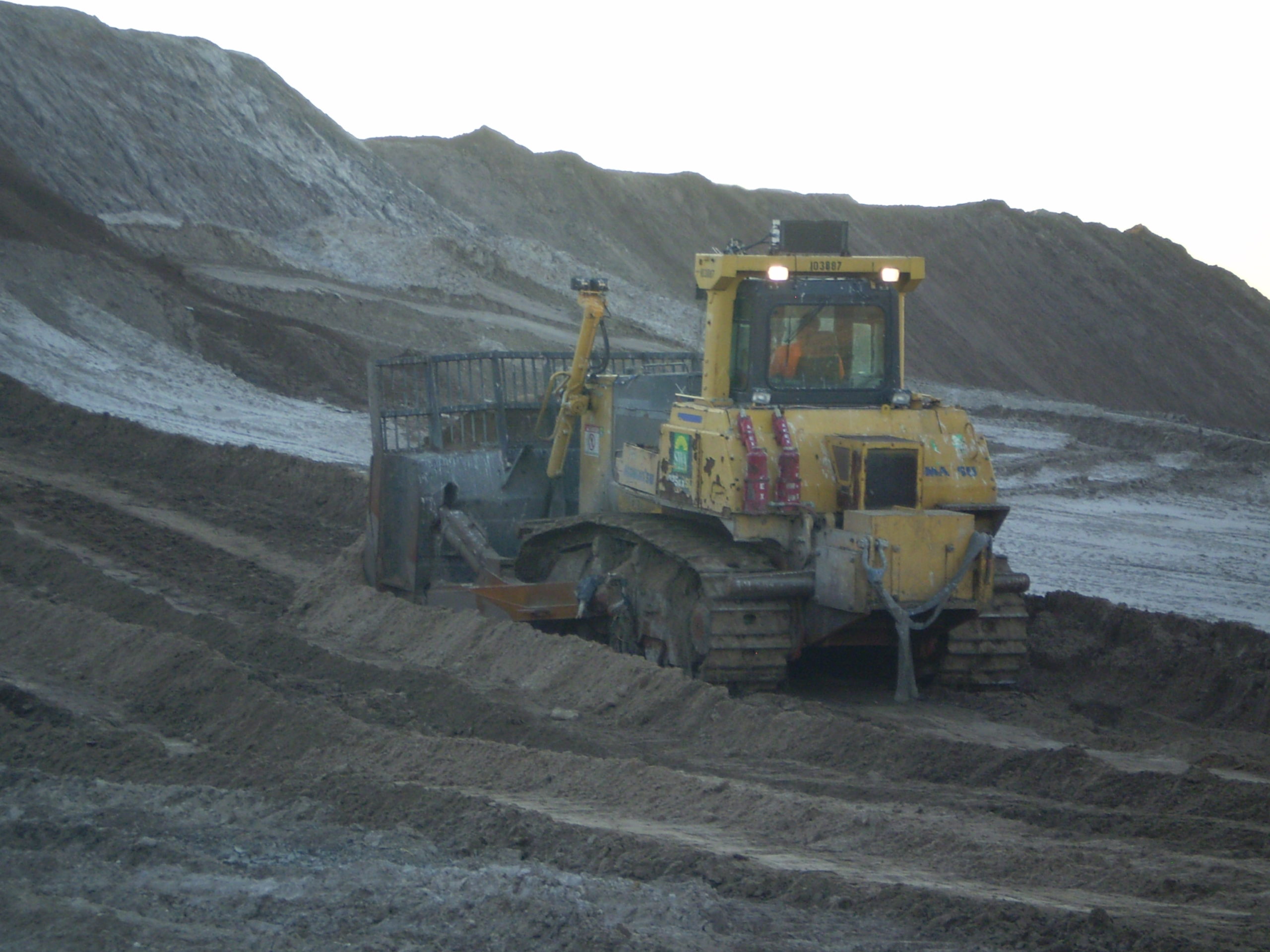There may be no worksite more likely to send a chill down your spine than a landfill. Many might have an idea of what a landfill looks like, but it takes experiencing one up-close and personal to really understand just how stress-inducing, — and truthfully, straight-up, gag-inducing nasty — they can really be.
The process begins (and in some senses, never ends) at the crack of dawn when a dedicated fleet of garbage machines begin their sunrise-to-sundown trek to the landfill. Once those machines dump their contents into the landfill, compactor vehicles (typically Caterpillar®, BOMAG, TANA, or Hanomag equipment) drive over the trash, breaking it up even further. Bulldozer machines (such as Caterpillar or Komatsu dozers) then push the compacted trash into heaping mounds within the landfill, which will then be covered by a regulated amount of soil – all by the end of each day.
“These machines are going over furniture. They’re going over appliances. It’s not just household waste. It’s everything that goes in a landfill, dead animals, trees, waste from your kitchens…it’ll churn your stomach,” said David Sullender, Southeast Regional Sales Representative at L&M Radiator. “The dozers drive the compacted trash as high as they’re legally allowed to go (regulations vary by location), meanwhile the ground is shifting and undulating underneath them. At ground level, it looks like you’re staring at a small mountain.”
The gathering, moving, and crushing of all this various waste material creates a fine, fibrous dust that is hardly visible to the eye, but when it’s met with any small drop of humidity or rain, it bakes onto the coolers of the machines causing detrimental effects. The material accumulates on the coolers so quickly that they must be cleaned often or the equipment risks overheating. This is made even worse in the southern U.S. because of the intense heat, humidity, and in some cases, saltwater in the air.
For this reason, without exception, every landfill has an overheating issue with their equipment because of the nature of the product that they’re working with. The different-sized particles, bags, or debris gets sucked or blown into the cooling system pathway causing them to overheat.
“One thing that amazed me about being up on top of a landfill was the continuous flow of garbage and landscaping debris coming in. It just didn’t stop. It’s a very stressful situation, and it’s something that’s different than what I’ve ever experienced,” said Sullender. “So if you have a machine go down for overheating due to debris build-up, that’s a big deal. There’s a lot of work to get done.”
Easy Cleaning Capability and Indestructible Nature Puts Mesabi® Radiators on Top
In a job where there’s no time to lose, landfill crews are determined to avoid losing time sitting and waiting for machines to cool down due to overheating. Even if a machine doesn’t fully go under for overheating, the harsh environment takes its toll on a machine by reducing engine life, sometimes by half.
“Many landfills replace radiators annually because they just can’t keep them clean,” said Tim Denehy, Midwest Regional Sales Representative at L&M Radiator. “Using high-pressure water or steam cleaners can be the only way to try to alleviate the situation. On conventional radiators, the high-pressure water damages the delicate cooling fins, bending the edges so they block themselves, rendering them uncleanable and destroying their ability to cool.”
But not with Mesabi® radiators.
“Mesabi radiators are built in such a way that they can withstand the abuse of the high-pressure water a lot better. The way it’s designed allows the material to pass through rather than to be stopped and blocked,” said Denehy. “This allows for much easier cleaning.”
And what happens if even high-pressure water fails? The tubes are easily replaceable in the field, so if it comes down to it, just pull the tube out, replace it, and move along.
To prevent build-up in the first place, L&M Radiator has supplied dozens of landfills across the U.S. and Canada with V-Tube Radiators, which are built to allow more debris to travel through the radiator seamlessly so less is being baked onto the radiator, lengthening the duration between times when it needs to be cleaned.
“We installed a Copper V-Tube cooler on the D8 Caterpillar dozer at a landfill near St. Cloud, Florida, and it just made a world of difference for them in terms of how much their downtime was reduced, and how much less maintenance they had to perform on the machine,” said Sullender.
Because machines operating in a landfill are subject to incredible vibration and uneven surfaces, landfill operators have come to appreciate Mesabi® radiators for their flexible core, allowing the heat exchanger to flex and move along with the undulation of the landfill surface, thus preventing cracking.
To fight against corrosion, Sullender and Denehy typically recommend V-Tube radiators made with copper. In more extreme applications, such as places with salt water, Mesabi also offers coolers with brass tubes and brass cooling fins built specifically to battle intense corrosive environments.
“The radiator is good for the life of the machine. A Mesabi radiator, cooler, or heat exchanger will often outlast an engine that has to go through two engine rebuilds or more. They are indestructible, basically,” said Denehy. “It’s one of the few products that will stand up in that environment consistently.”
The Sooner the Better
In a job as non-stop as landfill work, both experts stress that planning ahead, and considering the long-term use of a radiator is crucial.
“In these situations, you can save so much time and money by planning ahead,” said Denehy. “Don’t wait for the problem to be on your doorstep.”
Mesabi® makes radiators that are built to last. Explore what makes Mesabi® products so durable by visiting The Mesabi® Difference webpage.

